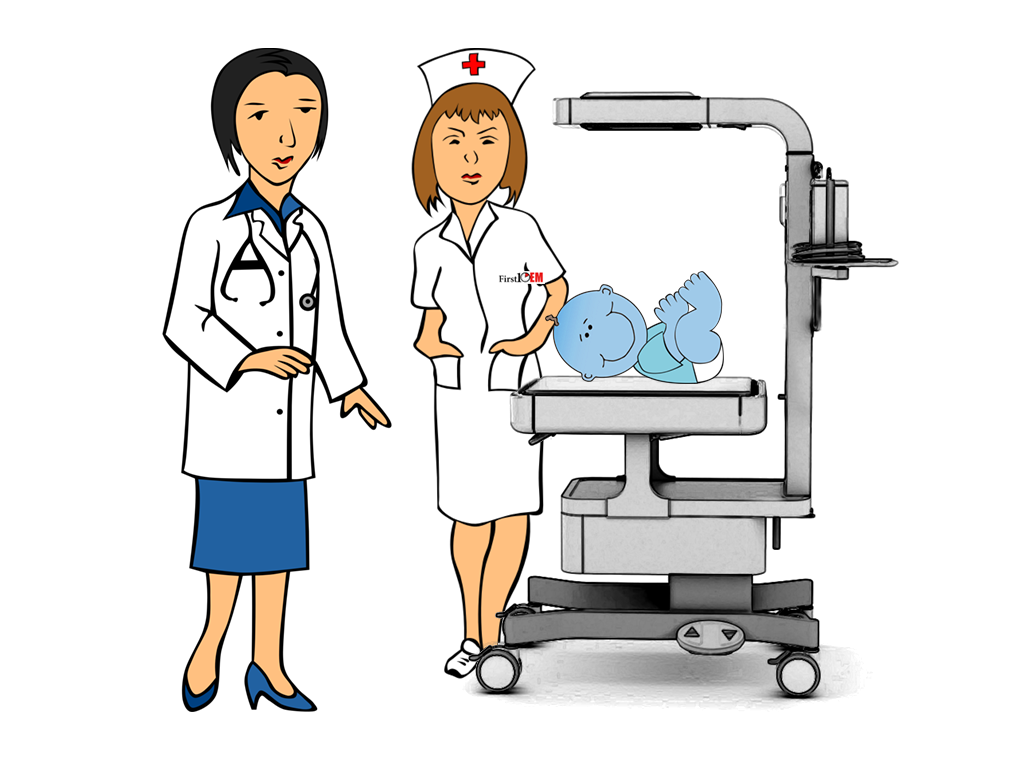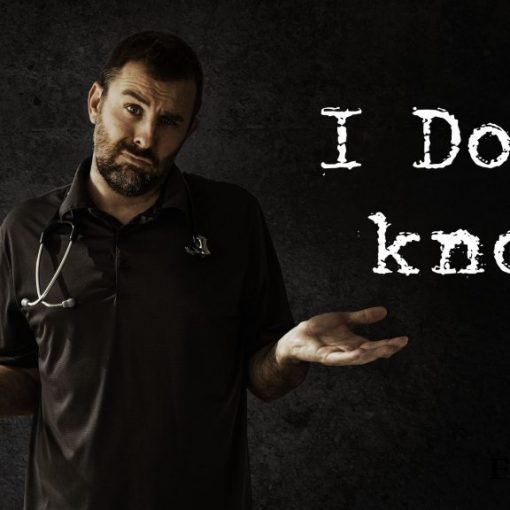Case
Code pink in labour and delivery, and you are the only doctor in the hospital tonight…
My approach
Call for help. Hopefully the code pink activated the pediatrician already. I like to bring a second ED doc if they happen to be around, if just for moral support.
Make sure the proper equipment is available. The baby should be in a warmer. You need appropriately size lines and tubes. The unusually small doses take longer to draw up, so now is a good time to get a spare nurse to start drawing up the correct epinephrine dose.
The first step of newborn resuscitation asks three questions to determine if the baby is ok: Is this a term gestation, is the baby breathing or crying, and is there good tone? Presumably at least one answer was no, which is why you are at a code pink.
Identify yourself and ask where the team is in the algorithm (it probably took you some time to run up a few flights of stairs). We will assume you got there immediately.
Is there meconium? If there is meconium AND the baby is depressed, intubate and suction. Otherwise continue with usual resuscitation.
Stimulate, position, warm. Dry with towels, position and clear the upper airway, stimulate with gentle rubbing or heel flicks. (In the premature infant, less than 28 weeks, do not towel dry as the skin is very fragile. Instead, maintain warmth by wrapping in plastic/ putting in a plastic bag.)
30 seconds in: Evaluate HR, Respiration, Color, Tone
- If HR <100 or apneic → BVM at 30-60/min and apply O2 sat probe
- If isolated central cyanosis → provide 100% O2
60 seconds in: Re-evaluate HR, Respiration, Color, Tone
- If HR between 60 and 100 → Continue BVM
- If HR <60 → Start chest compressions (3:1 with respirations, 90 compression and 30 breaths per minute)
90 seconds in: Re-evaluate HR, Respiration, Color, Tone
- If HR <60 → add epinephrine (0.01mg/kg = 0.1ml/kg of 1:10,000 iv, io, umbilical). For me, endotracheal epinephrine is a distal second choice (0.03mg/kg = 0.3ml/kg of 1:10,000 ETT)
- If no IV access, place an umbilical vein catheter
120 seconds in: Re-evaluate HR, Respiration, Color, Tone
- If HR <60 → add a fluid bolus (NS 10ml/kg slow push over 5-10min) and intubate
If the child is not getting better at this point, it is time to move beyond the basic NRP algorithm (or pray that the pediatrician will arrive soon).
Is this primarily a ventilation problem?
Airway obstruction? (meconium, choanalatresia, Robin syndrome)
- Options: suction, intubate if not done, attempt prone positioning for BVM, nasal ETT or airway, LMA, tracheostomy
Lung problem? (pneumothorax, congential diaphgramatic hernia, pulmunary hypoplasia, right main stem intubation)
- Pneumothorax diagnosis by ultrasound, transillumination, or CXR → aspirate with 18 gauge catheter or place a 10F chest tube.
- Diaphragmatic hernia (probably on CXR) → intubate as soon as recognized (BVM will inflate the stomach) and decompress the stomach with an 10F NG tube set to continuous suction
- Right main stem ETT → adjust tube, remember approximate depth of 3x the tube size
Is there a failure to begin spontaneous breathing?
- Hypoglycemia → test and treat. Generally use 2.2mmol/L as cut off and treat with D10W bolus of 2 ml/kg then D10W continuous at 4ml/kg/hr
- Maternal exposure to opioids → naloxone 0.1mg/kg IV (or IM if IV access not available)
Is this primarily a cardiac problem?
Especially consider is ongoing cyanosis or bradycardia despite good ventilations.
- Start PGE at 0.1mcg/kg/min IV
Could this be hemorrhagic shock?
If there was a history of placental abruption, resuscitate with O neg blood instead of NS as soon as available.
Could this be sepsis?
If you have made it passed the basic portion of the NRP algorithm, send cultures and start antibiotics
Notes
The NRP algorithm:
NRP suggests assessing the HR by umbilical palpation for 6 seconds (and, hopefully obviously, multiplying by 10 for the rate).
Oxygen saturation is supposed to be low in the newborn period. It doesn’t make sense to me to memorize the numbers. I make the resuscitation decisions based on the classic algorithm of heart rate, respiratory effort, color, and tone. Then, when things start to settle down a little bit, I will pull out my phone to look at the table (in the algorithm above).
Remember to put the oxygen sat probe in a pre-ductal location.
I am also not big on memorizing equipment sizes. I start at the smallest (3kg) end of the Broselow tape (or app version) and adjust from there. But a few for reference:
ETT = 4.0 uncuffed for term babies, progressively smaller from there
ETT depth = 3x tube size, or weight in kg + 6cm
LMA = size 1 up to 5kg
Laryngoscope = size 1 for term, 0 for PREEM (there is a 00 for extreme PREEM)
Other FOAMed Resources
Newborn Resuscitation on LITFL
References
Kattwinkel et al. Neonatal Resuscitation: 2010 American Heart Association Guidelines for Cardiopulmonary Resuscitation and Emergency Cardiovascular Care. Pediatrics: 126 (5); pp. e1400-e1413.
Collin MF. Chapter 14. Resuscitation of Neonates. In: Tintinalli JE et al. eds. Tintinalli’s Emergency Medicine: A Comprehensive Study Guide, 7e. New York: McGraw-Hill; 2011. http://accessmedicine.mhmedical.com/content.aspx?bookid=348&Sectionid=40381474
Cantor RM and Rothrock SG. Neonatal Resuscitation. In: Baren JM et al. eds. Pediatric Emergency Medicine. Philadelphia: Elsevier; 2008.







One thought on “Neonatal (Newborn) Resuscitation”